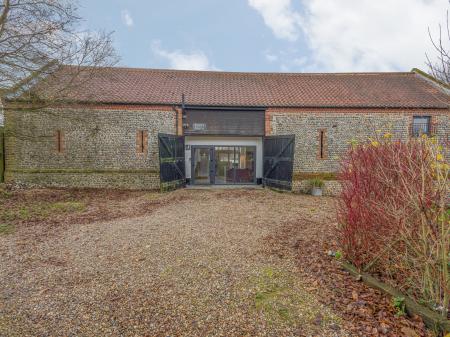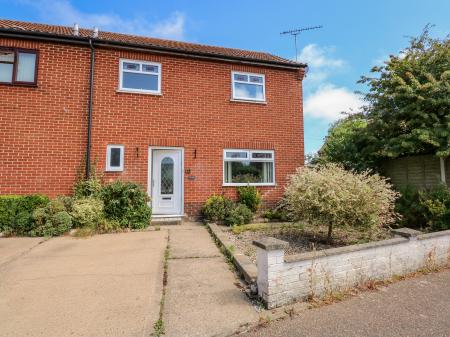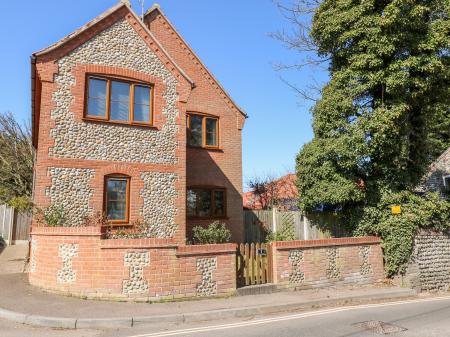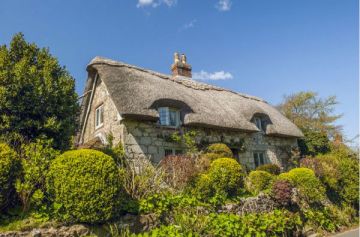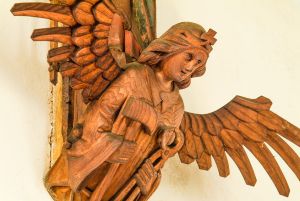
The village name probably comes from a combination of Cnapa, an Old English name, and 'tun', a settlement, or farm. So Knapton means Cnapa's farm, suggesting that the village has its origins in the period when the Danes began to settle in East Angla.
The Church of St Peter and Paul
The parish church of St Peter and St Paul is largely 14th century, with a 13th century Purbeck marble font topped by a cover carved in 1704. The font cover is inscribed with a Greek palindrome - a phrase which reads the same frontwards and backwards. The double hammer-beam roof, built in 1503, is one of the finest in Norfolk, with 11 bays, decorated with 160 carved figures.
Knapton Old Hall
The oldest secular building in Knapton is likely Knapton Old Hall, which was in the late 16th century. What makes the Old Hall so remarkable is that it has been almost unaltered over the past 5 centuries, making it an excellent example of Tudor architecture.
Don't confuse the Old Hall with Knapton Hall, built around 1800 and now a hotel. Also built around 1800 is the Grade II listed Knapton House on North Walsham Road. Both the Hall and House were owned by the Robinson family, and both are good examples of Regency architecture.
One member of the Robinsons was Sir Henry Robinson, who acted as Sword Carrier to Queen Victoria. The village name probably comes from a combination of Cnapa, an Old English name, and 'tun', a settlement, or farm. So Knapton means Cnapa's farm, suggesting that the village has its origins in the period when the Danes began to settle in East Angla.







 We've 'tagged' this attraction information to help you find related historic attractions and learn more about major time periods mentioned.
We've 'tagged' this attraction information to help you find related historic attractions and learn more about major time periods mentioned.